Abstract 8/2014
Table of content
Andrzej Krych – The intervention logic in engineering projects
Kazimierz Jamroz, Krystian Birr, Sławomir Grulkowski, Krzysztof Kalkowski, Tomasz Budziszewski – Analysis of the possibility of increasing the share of public transport in the provincial passenger travels on the example of the Pomerania region
Maciej Kruszyna – Challenges for „Mobility Policies” as the documents developing the existing „Transport Policies”
Olena Filippova, Andrzej Soczówka – Basic measures of financial support for electric urban transport companies in Ukraine
Abstracts
Andrzej Krych
The intervention logic in engineering projects
Abstract: The principles of using the logical framework approach (LFA) in the planning of projects were worked out in the 1990s under the leadership of the European Commission. Based on the observations of investment projects in the transport sector relying on the EU funding and following the principles of the Blue Book, essential discrepancies between the outcomes of these projects and their consequences, both in macroeconomic and local scale, have been identified. Contrary to hopes they have not provided a permanent solution to fundamental transport issues and its situation. In the macroeconomic scale, the situation was compared to the analysis of the effects of Chinese local government investments systems on the increase of China’s national debt. By defining a strict relation between an accurate, cause and effect diagnosis of the situation and the realization of general objectives and general projects under the intervention logic formula, two positive examples were presented (problem –action – effect). Generally, the article postulates to introduce intervention logic as an attribute of transport projects, additionally to, or within the framework of feasibility studies.
Key words: transport projects, urban transport, transport economics, projects management.
Kazimierz Jamroz, Krystian Birr, Sławomir Grulkowski, Krzysztof Kalkowski, Tomasz Budziszewski
Analysis of the possibility of increasing the share of public transport in the provincial passenger travels on the example of the Pomerania region
Abstract: Modal split between the available means of transport is one of the key challenges in developing Transport Plans in regions. Current status and forecasts conducted in the European Union show that in the coming years, the dominant mean of passenger transport would be a car with impending upward trend. It is therefore very important while constructing an integrated transport system in the region to increase the share of public transport in the regional passenger or stop its downward trend. This challenge faced authors of Plans for Sustainable Development Public Transport in Poland. The paper presents the current trends in modal split in selected countries, characteristics of passenger transport in the Pomerania province and forecast changes in the share of each mode of travel. Moreover the paper presents, proposed during formulating of transport plan, options for development of public transport networks and possible effects of their implementation on the modal split. The authors are trying to answer the question concerning the expected role of different types of public transport in the implementation of regional passenger transport.
Keywords: regional public transport, transportation plan, mode of transport, modal split,
Maciej Kruszyna
Challenges for „Mobility Policies” as the documents developing the existing „Transport Policies”
Abstract: The need for a change in approach from the supply side to the demand side of transport, which is reflected in the shift of activities from infrastructure to moderating transportation behaviors of users, is formulated in the process of assessing and updating the Transport Policies. Transportation behaviors can be equated with mobility, in its broader sense. Achievement of changes in mobility (transportation behaviors) expressed, for example, by the changes in the choice of means of transport will be now the aim of the policy replacing just infrastructure development of specific parameters.An important element of the new documents is to give an appropriate degree of accuracy allowing for an efficient implementation of the recorded actions and unambiguous assessment of specific investments. Highlighting the zones will be an important distinction in the areas covered by the Mobility Policy. Zoning should be richer than in the existing Transport Policies.The author proposes a modification of the terminology in the documents of Mobility Policy. The change in terminology should go with reformulation of the content of the documents relevant to the new aim. He introduces a distinction of the two spheres of activity: travel only by private cars (with short walk on foot at beginning and destination of the journey) and travel in an alternative way for the exclusive use of the private car. In the wake of this distinction he proposes to introduce four types of zones with varying role of the activity zones in different areas. Next important aspect of change is the territorial scope of the policy. Mobility (and transport) management rarely can close within individual municipalities. Use of Mobility Policy makes sense for large agglomerations, which consist of a central site surrounded by neighboring units. Examples of application of the proposed elements are referred to Wrocław, but presented methodology can be applied in any places. This article is an expanded and modified version of the papers from the conference “The performance of transport systems”, Poznan – Rosnówko, 2013 [1].
Key words: mobility, mobility policy, transport policy
Olena Filippova, Andrzej Soczówka
Basic measures of financial support for electric urban transport companies in Ukraine
Abstract: The article is a multifaceted review of the financial situation of urban electric transport in Ukraine. The main aim of this article is an analysis and critical evaluation of currently used forms of financial support activities of these companies. The introduction to these studies is a short description of current situation of urban electric transport (metro, trams, trolleybuses) in Ukraine. In the further part of article there is detailed description of advantages and disadvantages of each financing form of studied companies: internal financing, credit and government financing. Also detailed description of specification and practical mechanism of use of different financial measures illustrated on specific companies is presented in the article. The authors are giving an explanation about reason of inapplicability of other solutions. As a result of this studies, it is appeared that each of presented forms of financing has scarcities in practical aspects of application them in Ukrainian transport companies. An attention is paid to the mechanism of compensation calculating from the state budget for the carriage of passengers eligible for free and reduced fare. At the end of this article, simple solutions to improve government financing are proposed. The studies showed that current conception of functioning urban electric transport restrains its normal development. Incorporation to tariff structure planned profits and investment needs does not allow to cover operational costs with revenues. Important source of funding are subsidies from the state budget, but the way of their distribution deprives companies of motivation to increase effective indicators of their operation. Permanent crediting of everyday operating results with impairment of their financial situation and increasing risk of bankruptcy.
Keywords: Ukraine, electric urban transport, financing, crediting

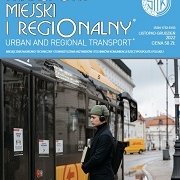 SITK
SITK 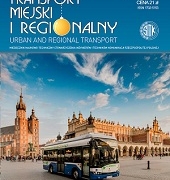
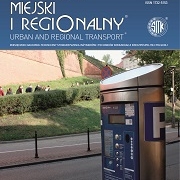 Wydawnictwa SITK RP
Wydawnictwa SITK RP 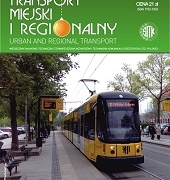
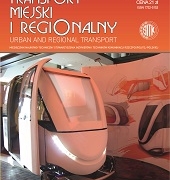
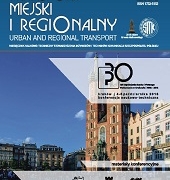

 SITK RP
SITK RP SITK RP
SITK RP